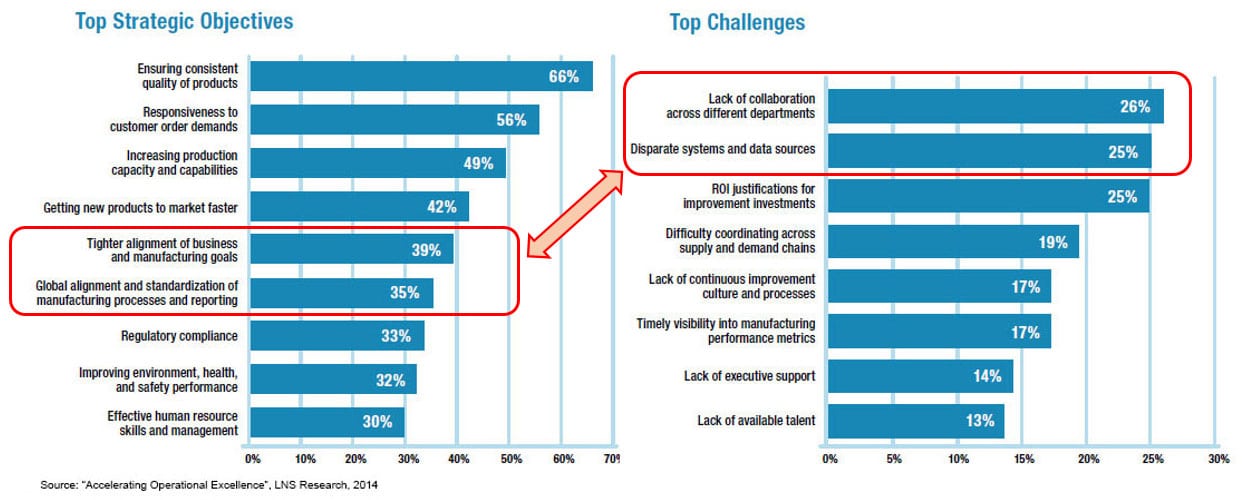Looking a little deeper into a 2014 LNS Research survey of manufacturers [1], we notice that the #1 and #2 Challenges listed for achieving strategic objectives in manufacturing operations management could be eliminated if the organization would shift focus of initiatives towards the #5 and #6 Strategic Objectives.
Top Strategic Objectives:
- Ensuring consistent quality of products
- Responsiveness to customer order demands
- Increasing production capacity and capabilities
- Getting new products to market faster
- Tighter alignment of business and manufacturing goals
- Global alignment and standardization of manufacturing processes and reporting
Top Challenges in Manufacturing Operations Management:
- Lack of collaboration across different departments
- Disparate systems and data sources
Organizations continue to focus on reducing cost and improving quality instead of focusing on eliminating the top challenges they have identified. This is confirmed by the fact that we do not see integration, collaboration or alignment projects on the list of top planned initiatives.
Top Planned Implementation Initiatives:
- Lean Manufacturing
- ISO9000/ISO9001
- Operational Excellence
- Six Sigma
- TQM
Reducing cost and improving quality are always good goals, but organizations should not underestimate the value of good integration and collaboration across departments. Perhaps someone in corporate management will read these reports and notice an opportunity to eliminate constraints to business process innovation—refocusing strategic initiatives into areas that will improve integration and collaboration across departmental walls. An integrated organization with integrated business processes can achieve new levels of productivity that will not just reduce waste and improved quality but will also lead to a more agile and responsive organization.
Reference:
[1] “Accelerating Operational Excellence”, Mark Davidson, LNS Research, 2014
